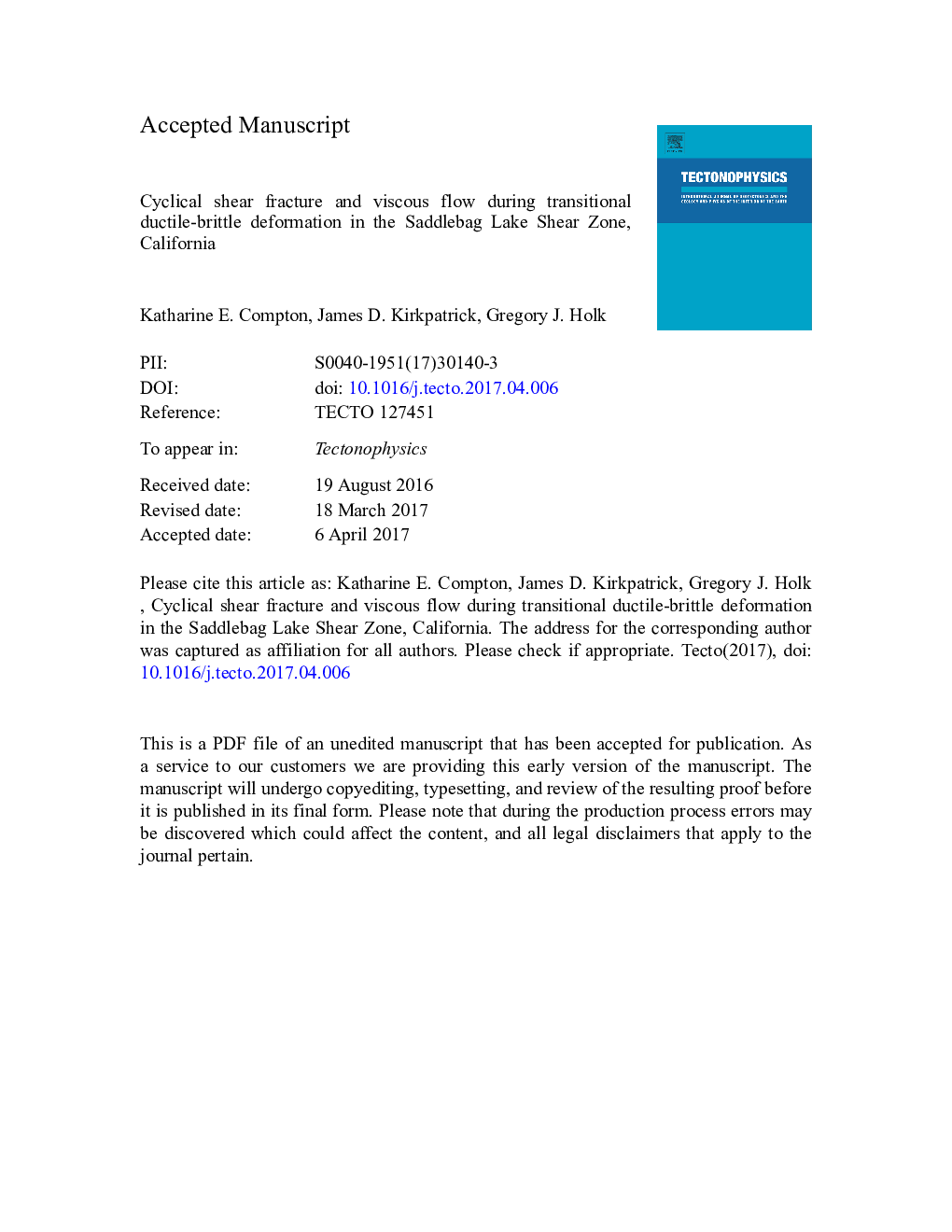| کد مقاله | کد نشریه | سال انتشار | مقاله انگلیسی | نسخه تمام متن |
|---|---|---|---|---|
| 5781674 | 1636697 | 2017 | 64 صفحه PDF | دانلود رایگان |
عنوان انگلیسی مقاله ISI
Cyclical shear fracture and viscous flow during transitional ductile-brittle deformation in the Saddlebag Lake Shear Zone, California
ترجمه فارسی عنوان
شکستگی برشی سیکلیکی و جریان چسبندگی در طول تغییر شکل پذیری ورقه وریدی در ناحیه برش دریاچه سدلبگ، کالیفرنیا
دانلود مقاله + سفارش ترجمه
دانلود مقاله ISI انگلیسی
رایگان برای ایرانیان
کلمات کلیدی
منطقه برشی، وین، شکستگی، ایزوتوپ اکسیژن، رئوئولوژی، لرزه تکتونیکی،
موضوعات مرتبط
مهندسی و علوم پایه
علوم زمین و سیارات
فرآیندهای سطح زمین
چکیده انگلیسی
Exhumed shear zones often contain folded and/or dynamically recrystallized structures, such as veins and pseudotachylytes, which record broadly contemporaneous brittle and ductile deformation. Here, we investigate veins within the Saddlebag Lake Shear Zone, central Sierra Nevada, California, to constrain the conditions and processes that caused fractures to form during ductile deformation. The shear zone mylonites contain compositional banding at centimeter- to meter- scales, and a ubiquitous, grain-scale, continuous- to spaced-foliation defined by aligned muscovite and chlorite grains. Veins of multiple compositions formed in two predominant sets: sub-parallel to the foliation and at high angle to the foliation. Some foliation sub-parallel veins show apparent shear offset consistent with the overall kinematics of the shear zone. These veins are folded with the foliation and are commonly boudinaged, showing they were rigid inclusions after formation. Quartz microstructures and fluid inclusion thermobarometry measurements indicate the veins formed by fracture at temperatures between ~ 400-600 °C. Quartz, feldspar and tourmaline δ18O values (+ 2.5 to + 16.5) suggest extended fluid-rock interaction that involved magmatic, metamorphic, and meteoric-hydrothermal fluids. The orientation and spatial distribution of the veins shows that shear fractures formed along mechanically weak foliation planes. We infer fracture was promoted by perturbations to the strain rate and/or pore pressure during frictional-viscous deformation in a low effective stress environment. Evidence for repeated fracture and subsequent flow suggest both the stress and pore pressure varied, and that the tendency to fracture was controlled by the rates of pore pressure recovery, facilitated by fracture cementation. The tectonic setting and inferred phenomenological behavior were similar to intra-continental transform faults that host triggered tectonic tremor, suggesting the mechanisms that caused brittle fracture during viscous deformation may be important for comparable active systems.
ناشر
Database: Elsevier - ScienceDirect (ساینس دایرکت)
Journal: Tectonophysics - Volume 708, 20 June 2017, Pages 1-14
Journal: Tectonophysics - Volume 708, 20 June 2017, Pages 1-14
نویسندگان
Katharine E. Compton, James D. Kirkpatrick, Gregory J. Holk,
